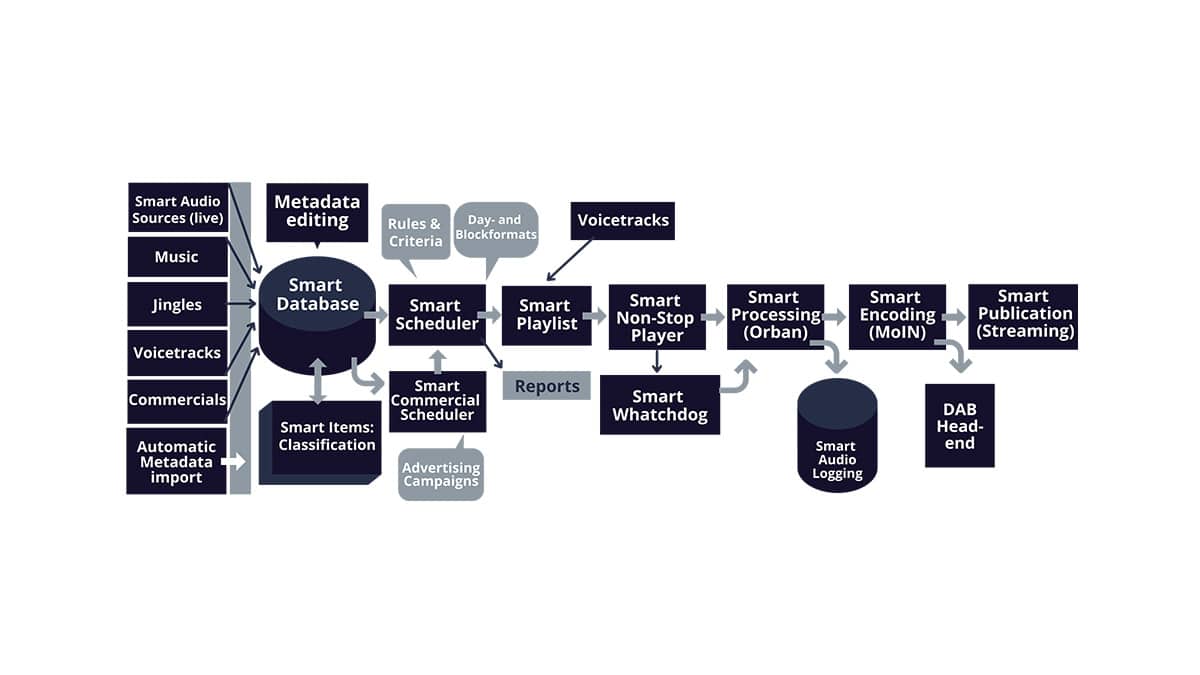TERNEUZEN, Netherlands — Right now, more than ever, broadcast radio seems to be hamstrung by budgetary constraints. This comes at a particularly bad time. Radio is under tremendous pressure to innovate and differentiate in the face of competition from new, powerful and unbridled players.
Until recently, broadcasters could manage costs by trimming creative content producers and focusing on tighter music automation. But that offering is now in the hands of powerful streaming services. Perhaps it’s time for broadcasters to rethink priorities and manage budgets with a view to the future.
The solution demands seriously re-evaluating how we run things. Still, it is gaining ground as broadcasters increasingly realize that if they’re to invest more in creating powerful, compelling content that the streaming platforms can’t — yet — there are other places where they can cut costs.
All this staff and technology must “sit” somewhere — in a building. But what if that’s not the case?
Running a significant radio station is an expensive business. Beyond the major capital expenses to get going, stations need content producers, managers and presenters, technicians, news editors, journalists, social media managers, administration and staff. But they also need the different hardware, software and local infrastructure components, such as servers that “speak” to each other. All this staff and technology must “sit” somewhere — in a building. But what if that’s not the case?
Then along came COVID
If radio stations learned something from the COVID pandemic, it’s that they can operate remotely to a greater degree than they formerly believed possible. Staff and technology don’t need to all be in the same building. They can be anywhere in the world. All employees need to create content, manage it and get it on-air is to get online. Content producers, managers and presenters don’t need to be behind a desk in a studio running software on a server located in the next room. They can do everything they need on a laptop, with the software sitting in the cloud. That idea is now ramping up.
Enter the concept of “Radio-as-a-Service.” When a radio station buys its equipment and software, it may own the assets, but it’s also stuck with the issues and costs of maintenance and the products’ limitations. Should a newer or better version come on the market, the station has little alternative but to cough up more Capex.
The “as-a-service” model of operational expenditure obviates this issue because that remains the role of the service provider. The software-as-a-service (SaaS) licensing and delivery model is now commonplace in business, and removes many a headache for administrators. Perhaps it’s time to employ this model more in radio.
The cloud
The RaaS model is quite simple: everything needed to run a radio station sits in the cloud. Data and content management, playlist management, music and spot scheduling, production, voice-tracking, processing, a streaming platform… it’s all done remotely. Furthermore, it’s easily scalable. And because the service provider continually maintains and updates everything, there’s no downtime, and no need for IT teams to be on constant standby. Multiple content producers needn’t queue for studio time. If they can log in, they can create, manage and schedule their content, all in the cloud.
The significant benefit of the RaaS model is that it allows stations to focus their budgets on what steaming services are struggling with: Getting creative people to create compelling content. Budgets are not infinite, so stations must give careful thought to spending on both labor and tools. And these tools must be scalable, flexible, easy to use, complete and affordable.
The RaaS model is quite simple: everything needed to run a radio station sits in the cloud.
Different companies offer different cloud-based services for radio stations, and the offerings are expanding as the RaaS model gains traction. But having multiple service providers offering different solutions is not ideal. SmartRadio, by Broadcast Partners, is a multiple-service solution that provides the next step in radio production, specifically developed for the cloud, with all advantages that the cloud offers.
It’s now possible to control and manage an entire radio station or multiple stations from wherever you are, just by using Wi-Fi or a mobile connection. Station managers can edit format, music playlist and commercial planning, and even manage website content and social media accounts. Security is vital, so SmartRadio allows managers to grant secure access and specific user rights to content contributors to deliver commercials, voice tracks, music and data based on two-step verification. Once done, the system can process the audio before broadcast.
Simply put, stations can now access all needed functionality in one single platform on a cloud environment securely and affordably, freeing up valuable budget to allow radio stations to do what they do best: connect with their audience.

